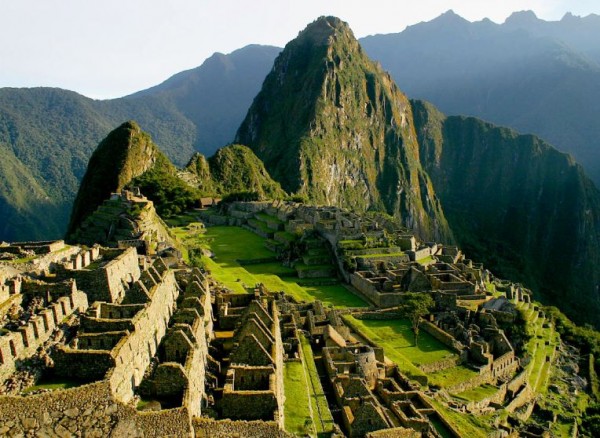(Commentary) – The violence in Arakan State over the past two weeks has caused disillusion for some, division among many, and shock and anguish for everyone. Racial and religious tensions that have simmered just beneath the surface for years have exploded into an ugly cycle of destruction and revenge which threatens to derail Burma’s journey towards democracy and peace.

Benedict Rogers Photo: facebook
Crude, racist abuse, deliberate misrepresentations, doctored images, misinformation and biased reporting have added a cruel twist to an already bloody tragedy.
Some people may call me biased, and to that charge I plead guilty. But I am biased not in favour of one community over another, in favour of one race or religion over another, in favour of one particular political party over another. Instead, I am biased in favour of the universal values of human rights, including religious freedom.
I am biased in favour of mutual respect, equal rights, peace and harmony between religions and races. I am biased in favour of the dignity of each and every human being, whatever their ethnicity or religion. I am biased against intolerance, hatred, racism and extremism.
The tragedy in Arakan State is that ordinary people from both Rakhine and Rohingya communities have suffered. Homes burned, mosques desecrated, women raped, people killed – and for what purpose? It has been claimed that as many as 30,000 people are displaced as a result of the violence, although this figure is not verified because the UN has vacated its staff and independent monitors have not had access to the area. One of the first things the government of Burma should do is allow international monitors in to assess the situation.
I am writing this as a friend of Burma and all of Burma’s people. I have worked for the cause of freedom, democracy and human rights in Burma for the past 15 years, and travelled more than 40 times inside the country and to all its borders. I have worked with Burmese democracy activists and former political prisoners, and with Karen, Karenni, Shan, Mon, Kachin, Chin, Rakhine and Rohingya people. I also write as someone with extensive experience of other countries where religious intolerance is growing, often from extremist Islamism: Indonesia, Pakistan and The Maldives, in particular.
And so with that background, I appeal to the government and people of Burma not only to stop the violence, but to change the attitudes of religious intolerance and racial hatred which have come to the fore in the past few weeks. I appeal to the people of Burma to be true to everything that is good and noble in Burmese and Buddhist culture, and to live up to the values of freedom and human rights for which they have been struggling. I make this appeal on several grounds.
First, I appeal to human conscience on the grounds of humanity and human rights. The Universal Declaration of Human Rights is exactly that: universal, for everyone. As Aung San Suu Kyi said in her Nobel Peace Prize Lecture last Saturday, human rights are “the birthright of all”. No human being should be degraded, restricted or abused in the way the people of Burma have been by the military regime for so long – and that includes the Rohingya people.
Second, I appeal on religious grounds. From my basic understanding of Buddhism, I know that there is a principle called “metta” – “loving kindness.” It is similar to the principle in my own faith, Christianity, of “love your neighbour as yourself.” In Christianity, we are also taught to “love your enemies.” Neighbour or ‘enemy,’ Rakhine or Rohingya, Buddhist, Christian, Muslim or Animist, shouldn’t we apply “metta,” “love,” to all?
Last, if simple humanity, basic human rights and core religious teachings cannot persuade people to exercise love, tolerance, respect and peace, to safeguard equal rights for all, then I appeal on grounds of self-interest.
If what I have said so far has not upset some, what I am about to say will upset others, but I must say it anyway. The Rohingya people are among the most marginalised and persecuted people I have ever come across. I have visited Rohingya refugees on the Bangladesh-Burma border, and seen the despair in their eyes. I have met Rohingya refugees outside the region, and seen the depression in their hearts. The Rohingyas I know are among the most hospitable, kind, gentle, decent, tolerant, peace-loving human beings I have met. They have clung on to human decency, even when others have tried to deny them human dignity.
But I also know there is a danger ahead if they continue to be marginalized and persecuted not only by the regime, but by society as well, and it is this: the danger of radicalization.
The charge of ‘terrorist’ is already thrown at the Rohingyas, without any foundation or substance and fuelled by bigotry. But it could be a self-fulfilling prophecy. If the Rohingyas are persecuted by the regime, marginalised by the democracy movement, discriminated against and attacked by society and ignored by the international community, if radical Islamist organizations tap into the seething despair among the Rohingya people, and the Rohingyas feel they have nowhere else to turn, then it is possible that more Rohingyas could be radicalized. Having seen radical Islamism in action in Pakistan, Indonesia, The Maldives and on the streets of London, to name just a few places, I fear for Burma if it is added to its woes. I am not talking about bombs and hijackings. I am talking about the ideology of political Islam, Islamism, as distinct from the religion of Islam followed by the vast majority of Muslims who adhere to the peaceful teachings of their faith.
Marginalization, despair, statelessness could be a breeding ground for radicalization. As Aung San Suu Kyi said in Oslo, “War is not the only arena where peace is done to death. Wherever suffering is ignored, there will be the seeds of conflict, for suffering degrades and embitters and enrages.”
Don’t misunderstand me. What I have said must not be used to justify attacks on the Rohingyas. Indeed, quite the opposite. To avoid provoking Islamism, the Rakhine, the Burmans and the whole people of Burma should work with moderate-minded Rohingyas whose only desire is to be given the same rights as others, to be treated with respect and dignity, to live in peace. One Rohingya several years ago described his vision beautifully to me when he described Burma as a garden, in which various different flowers grow – and the Rohingyas are one of those flowers.
There are two myths about the Rohingyas that need to be dispelled. The first is the idea that ethnicity or race is tied to land or state. The Rohingyas are not seeking their own territory, or at least not the ones I know. They just want to be recognized as citizens of Burma. Even if they were demanding their own state, there is no reason to grant them that, as long as they are treated with dignity and equal rights.
The second is the idea that they are Bengali illegal immigrants. To this charge I have several responses.
First, the historical record is clear that the Rohingyas have lived in northern Arakan for generations. Scholars can debate the precise record with civility and evidence, but however many years it is, no one can doubt that they have been there for generations. The first President of Burma, Sao Shwe Thaike, a Shan, said that the “Muslims of Arakan certainly belong to the indigenous races of Burma. If they do not belong to the indigenous races, we also cannot be taken as indigenous races.” Burma’s first Prime Minister U Nu, who used the disputed term ‘Rohingya,’ authorized the Burmese Broadcasting Service to broadcast in the Rohingya language, and Rohingyas sat in Parliament. It was only when Ne Win took power, driven largely by his own racist and anti-Muslim prejudice, that they were stripped of their citizenship and plunged into decades of abuse.
If they were illegal immigrants from Bangladesh, why do so many of them speak Burmese fluently and have Burmese names? If they were immigrants from Bangladesh, why does Bangladesh refuse them refuge when they flee Burma? If they were immigrants from Bangladesh, why do they wish to stay in Burma and make it their homeland, when all they receive is abuse? Illegal immigrants usually flee poverty and oppression to places of relative prosperity and freedom – why then would people flee Bangladesh for Burma?
Some Burmese have told me that it is a porous border and some who claim to be ‘Rohingya’ may be illegal Bengali immigrants. If that is so, then Burma needs to establish a proper system for identifying people. Those who were born in Burma must be treated as citizens. Those who are found, credibly, to be migrants should be processed appropriately and either given citizenship or returned to their country of origin, in the same way any country handles illegal immigration. What must not happen, in any circumstance, is the kind of inhumane, degrading abuse to which these people are subjected. Even illegal immigrants have human rights.
Martin Luther King expressed it well when he said, “Injustice anywhere is a threat to justice everywhere.” The Rohingya people, stateless, denied access to education, facing restrictions on movement, marriage and religion, have been facing a grave injustice for years. The Rakhine people, like others in Burma, have been suffering injustice too. And both communities, indulging in a depraved cycle of violence and destruction, will destroy each other and derail democracy for Burma if the current crisis continues.
So it is time for everyone, in Burma and in the international community, who cares about universal human rights, human dignity and peace, to stand up and put an end to the violence, and begin the long hard road to reconstruction and reconciliation.
Today there is a need for emergency humanitarian aid for all the victims of the violence, who have lost homes and are without food or drinking water.
Tomorrow, there will be a need for support for inter-faith and inter-ethnic dialogue and reconciliation. A starting point would be for us all to reflect on Daw Aung San Suu Kyi’s words in her Nobel Lecture: “Ultimately our aim should be to create a world free from the displaced, the homeless and the hopeless, a world of which each and every corner is a true sanctuary where the inhabitants will have the freedom and the capacity to live in peace. Every thought, every word, and every action that adds to the positive and the wholesome is a contribution to peace. Each and every one of us is capable of making such a contribution. Let us join hands to try to create a peaceful world where we can sleep in security and wake in happiness.”
Let that be the way forward, for Burman, Rakhine, Rohingya, for government official and political prisoner, for Burmese citizen and foreign friends of Burma alike.









